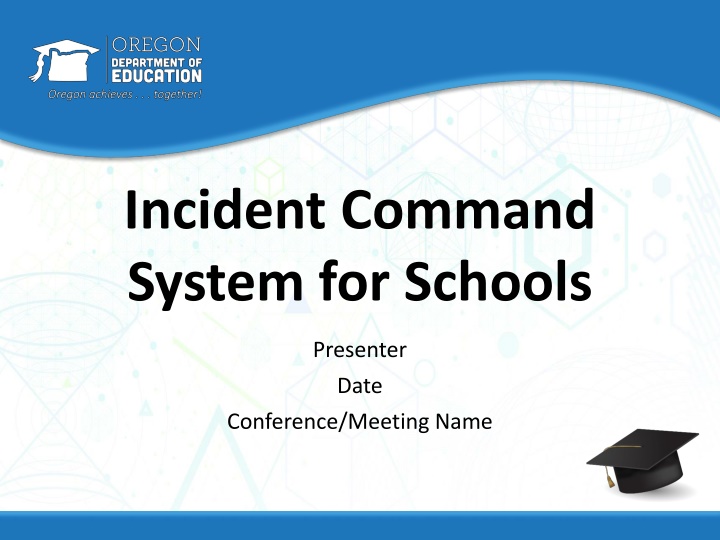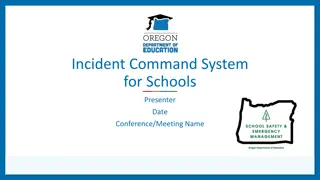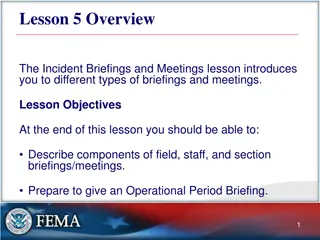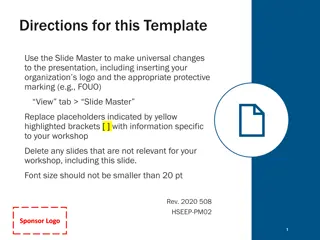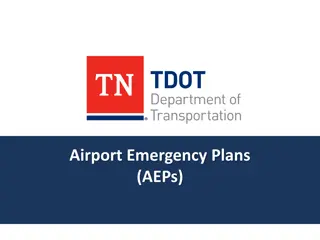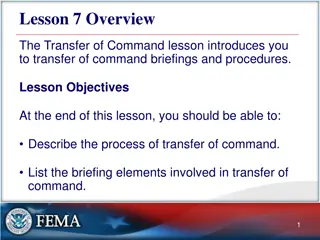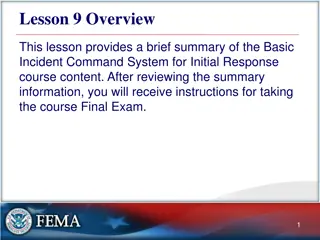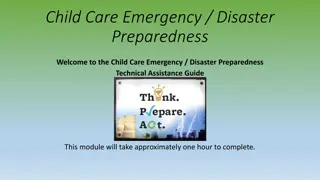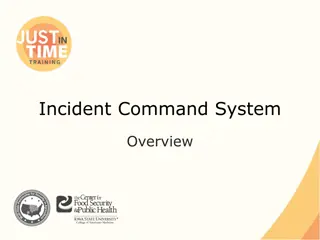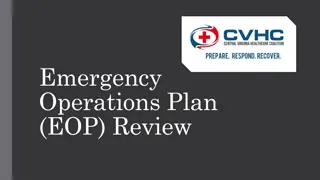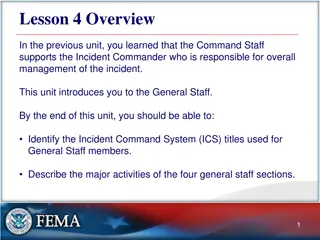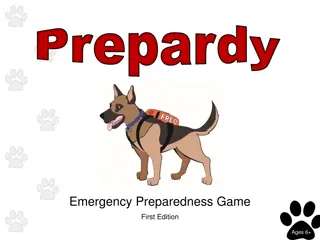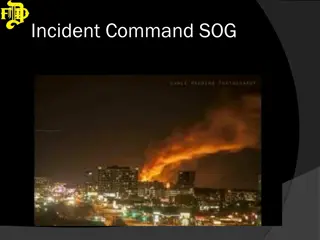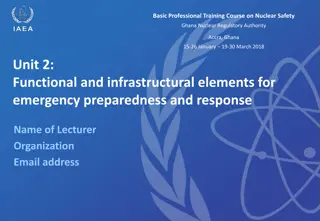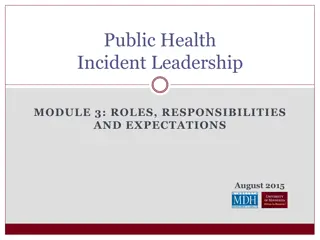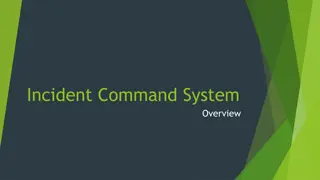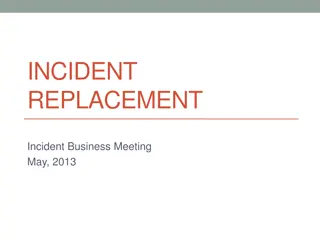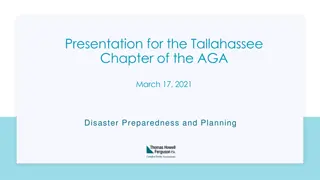Effective Incident Command System for School Emergency Preparedness
This presentation introduces the Incident Command System (ICS) for schools, emphasizing the importance of coordination with community partners and outlining the purpose and structure of the ICS. It explains key concepts, the roles within the system, and the sections involved in incident response. Key takeaways include the need for clear command structure, unity of purpose, and adherence to the ICS for effective emergency management in schools.
Download Presentation

Please find below an Image/Link to download the presentation.
The content on the website is provided AS IS for your information and personal use only. It may not be sold, licensed, or shared on other websites without obtaining consent from the author.If you encounter any issues during the download, it is possible that the publisher has removed the file from their server.
You are allowed to download the files provided on this website for personal or commercial use, subject to the condition that they are used lawfully. All files are the property of their respective owners.
The content on the website is provided AS IS for your information and personal use only. It may not be sold, licensed, or shared on other websites without obtaining consent from the author.
E N D
Presentation Transcript
Incident Command System for Schools Presenter Date Conference/Meeting Name
Presentation Overview Today s Agenda Before we begin Purpose of the ICS Structure of the ICS ICS: Key Concepts Where you fit into an ICS Conclusion 2
Before we begin Coordination With Community Partners Emergency management and first responders will be in your schools during an incident. Prior coordination with them will ensure a smooth transition during an emergency. Coordinate before an emergency happens so that first responders are not surprised by your school s structure, environment or organization. 3
Purpose of the ICS Incident Command System: Why? Inadequate management is the leading cause of incident response failures. Clear and definable command structure ensures unity of purpose during an incident. The ICS is part of the National Incident Management System part of a top-down approach. The use of ICS is a requirement for all schools and school districts receiving emergency preparedness funding. 4
Structure of the ICS Incident Command System: How it is structured Incident Commander PIO Safety Liaison Finance/ Admin Operations Planning Logistics 5
Structure of the ICS (explained) Incident Command System: How it is structured The ICS is adaptable and scalable you only activate the sections you need. The incident commander is responsible for the work of the sections that are not independently staffed. The command staff assists and advises the incident commander. Public information officer. Safety officer. Liaison officer. The departments engage in incident response. 6
Structure of the ICS (Sections) Operations Section The operations section conducts the response. Likely the first section that will be set up during initial response. Logistics Section Responsible for supplying and providing function to the incident response. Responsible for communications, transportation and supply staging. Planning Section The planning section plans out the response. Coordinates with the other sections for continued response. Finance and Administration Section The finance and administration section ensures the bills get paid and people get tracked. 7
ICS: Key Concepts Unity of Command Each person should only report to one supervisor to avoid confusion. Chain of Command There should be a clear line of responsibility to avoid command overlap. Unified Command When multiple organizations work together with independent commands they should work together to avoid conflicts of command. 8
ICS: Keep in Mind When an ICS is established for an incident or event in a school: There is no correlation with the school administrative structure. The ICS structure is different from the daily administrative structure in order to avoid confusion over whom you should take direction from. The supervisors of the Incident Command should use the correct ICS titles; these will be different from their daily school position titles. 9
Where You Fit (into the ICS) Initial Response: Eventually, police, fire, emergency medical services or another external agency will manage response to the incident. First response will be by the people in the building already: you! You must act as a bridge from the time of initial response until first- responders arrive. Consider: ICS can also be used as an effective management strategy for non- emergency events. 10
ICS in Action (examples) Incident Command System: What happens when ? What happens when you have a missing student? The principal may assume all roles in the ICS structure with only a couple jobs delegated to other staff members. Probably don t need to involve first responders just yet. What happens when you have a fire in the building? The principal may initially take command. Teaching staff would be the operations section. What other roles may be enacted before first responders arrive? 11
Conclusion Federal Emergency Management Agency Resources A brief (8-page) document that explains ICS in a school environment: https://training.fema.gov/emiweb/is/is100c/handouts/ics%20for%20sc hools.pdf Additional training that covers the ICS in greater detail: https://training.fema.gov/is/courseoverview.aspx?code=IS-100.c 12
End on a Quote! The only way you are going to have success is to have a lot of failures first. -Sergey Brin (co-founder of Google) (supposedly) 13
